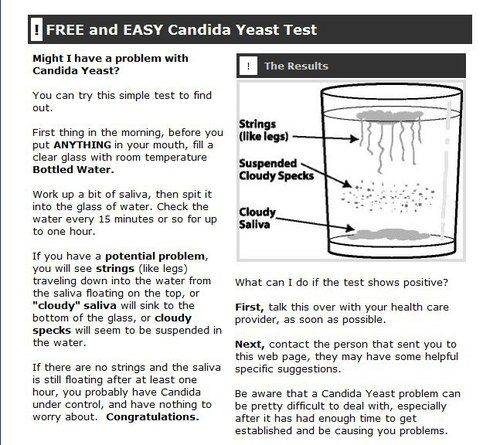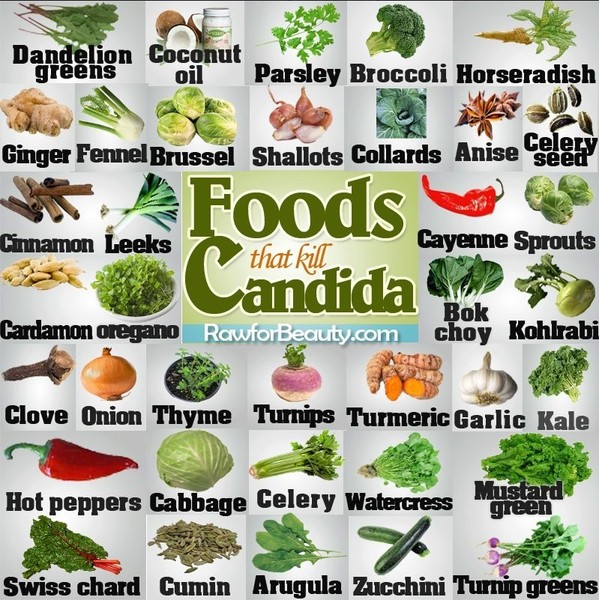Candida can be at the root of chronic health issues, chronic fatigue, and digestive issues. It can also be a sign that there are deeper underlying problems, such as a parasitic disease (e.g., giardiasis) or a bacterial infection (e.g. Hpylori).
What is Candida?
Candida is a microbe that falls under the category of fungal infection. There are a variety of other microbes underneath the infection umbrella, as well, that can attack the body. These include bacteria, parasites, and viruses. Any of these can be stressors for Candida or other fungal infections and can drive health problems, including a leaky gut.
There are many species of Candida, including Candida krusei and Candida albicans. Candida albicans is the more common species—it is the one that typically causes jock itch, yeast infections, athlete’s foot, nail fungus, and even dandruff.
Candida can stress many areas of the body, including the adrenal glands, liver, and brain. And Candida with other stressors, such as endotoxins, bacteria, gluten, and food allergens, in the intestines can cause a leaky gut.
Candida and the Adrenal Glands
Candida and other fungal infections put stress on our adrenal glands. Our adrenal glands sit right on top of our kidneys, and these glands deal with inflammation. The stress and inflammation caused by a Candida infection will force our adrenal glands to come to the rescue and help heal all that inflammation in the gut and the body.
The adrenals produce cortisol to get rid of a lot of this inflammation. Imagine you have a smoldering fire. The adrenals are like the fire hose, and the cortisol is the water that’s going to extinguish fire in the gut.
Candida and the Liver and Brain
Candida can produce its own toxins. For instance, bacteria produce a toxin called lipopolysaccharide, or endotoxin.Candida, and other funguses, produces mycotoxin.
Mycotoxin creates a by-product called acetaldehyde. Acetaldehyde is a stress on the liver. A lot of my patients say that when they eat bad, they kind of feel drunk. Typically, that’s the effect of the by-product acetaldehyde on the liver.
Acetaldehyde then creates a compound on the brain called salsolinol, which can affect the substantia nigra of the midbrain and the cells that produce dopamine. This can potentially cause vertigo-like symptoms, dizziness, and even Parkinson’s-like symptoms.
Candida and the Intestines
A healthy intestinal tract is lined with microvilli and contains junctions underneath that are nice and tight. These junctions are the mechanism that provides the barrier between the inside of the gut and the blood. When Candidais present in the gut, it’s going to put stress on the gut lining.
On deeper inspection, we might also find bad bacteria, parasites, and viruses. All of these things adding additional stress to a Candida infection can cause our tight junctions to open up, allowing those undigested food particles, bacteria, and even Candida to slip into the bloodstream.
If you need help getting rid of your candida, read on!

Candida Disrupts Peristalsis
The mycotoxins Candida produces will also disrupt peristalsis, a wavelike contraction in your large and small intestines that helps force out your stool. This will prevent regular bowel movements. If you’re not pushing out about twelve inches of stool every day, you’re going to start to reabsorb a lot of these toxins.
One of the big things we see with Candida is constipation due to mycotoxins, and constipation leads to autointoxication - you’re poisoning yourself, leading to more issues with leaky gut. This is one of the biggest mechanisms behind autoimmune disease, which we absolutely don’t want.
Diagnosing Candida
There are three methods we typically use to diagnose a Candida infection:
- Blood test
- Stool test
- Clinical signs and symptoms
- At-home test
A blood test tends to be a pretty good mechanism to look for the presence of Candida. When I look at the blood, I look at IgM, IgG, and IgA. IgM and IgA will reflect a more acute or active issue or infection. The blood test is an indirect measurement. It looks at the response of the immune system coming to the rescue of the infection, so it looks for the fighters that would typically attack Candida, not necessarily the actual infection.
Candida is hard to find in a stool test. We’ll try to culture the stool and see if it comes back positive. If it does, it means you definitely have a Candida or fungal issue. If it comes back negative, it doesn’t necessarily rule it out.
With both lab tests there can be a decent amount of false negatives. If it comes back negative, there’s a good chance it’s a false negative. There aren’t many false positives, so if it comes back positive, it’s there. In my opinion, a more accurate way to diagnose a Candidainfection is through clinical signs and symptoms.
What exactly are clinical signs and symptoms? We’ll make observations and ask a variety of questions.
- Do you have a lot of flatulence, and is there a lot of odor there?
- Does your bedroom have a yeasty smell to other people?
- Do you have a history of jock itch, athlete’s foot, or yeast infections?
- Do you have skin rashes? Not psoriasis, eczema, or dermatitis—more of a blotchy kind of rash that doesn’t really rise up. That tends to be more of a fungal rash.
- Do you have orange or yellowish fingernails or toenails?
- Do you have chronic dandruff?
- Does your tongue tend to turn white? This is called thrush, and it’s the ultimate symptom. It can be a subtle white, pure white, or anything in between.
Clinical signs and symptoms are the gold standard—if we see the clinical signs and symptoms of Candida, it’s there.
You can also use free and easy at-home test to check for the presence of Candida:

Treatment Options
If you have chronic Candida or fungal issues, your diet is the best place to start. Read The Fungus Link by Doug Kaufmann. The following are the essentials for the antifungal diet:
- Good fats and proteins
- Carbohydrates primarily from nonstarchy vegetables
- Avoid most nuts (including peanuts)—almonds are OK
- Cut all grains, legumes, and dairy (except grass-fed butter)
- Eat only low-glycemic, low-sugar fruits (e.g., berries, green apples, grapefruit, lemons, and limes).
- Minimize sugar (a little is necessary because without it these funguses can form into cysts or spore-like states that make it harder to kill them)

Herbs like grapefruit seed extract, undecanoic acid, various Berberines, and oil of oregano are good options. The key is to use them in high enough dosages. Typically, taking two or three can be a great combination.
Finally, we have to make sure deeper issues, or infections, aren’t present because we can treat Candida, but it won’t do any good if you also have a more serious underlying infection, such as a Giardia parasite. You have to pull a weed out at the root. If you don’t pull it out at the root, it’s going to grow back. We have to treat the underlying issue, or you aren’t going to get better.
If you have chronic gut issues, health concerns, or adrenal fatigue that you feel could be driven by Candida, reach out and schedule a consult to learn about your options. If you need more help getting to the root cause of your chronic fungus.
~Thanks to Dr Justin Marchegiani
No comments:
Post a Comment